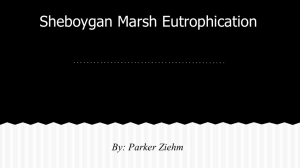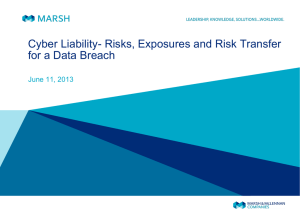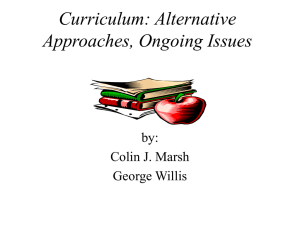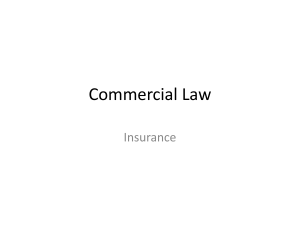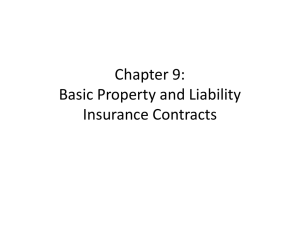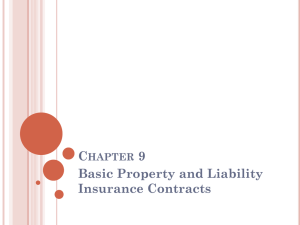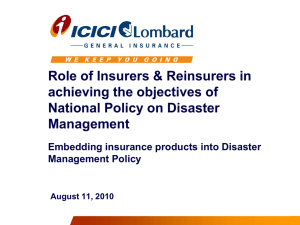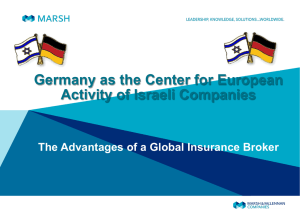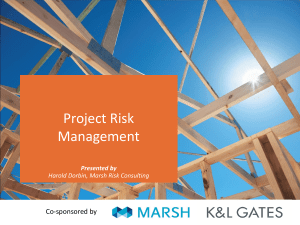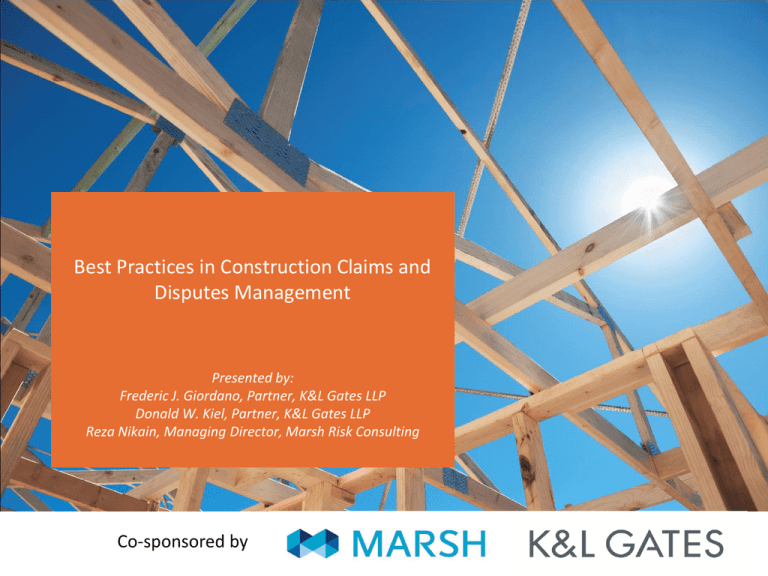
Best Practices in Construction Claims and
Disputes Management
Presented by:
Frederic J. Giordano, Partner, K&L Gates LLP
Donald W. Kiel, Partner, K&L Gates LLP
Presented
Reza Nikain, Managing
Director,by
Marsh Risk Consulting
Co-sponsored by
Overview
Types of Policies
Property
Business Interruption
Rebuild and Restoration
Claims Preparation and Submission
Disputes Prevention and Resolution
Conclusion and Questions
1
General Aspects of Property Policies
First party.
Insures the policyholder’s losses rather than the losses of others.
Some do contain duty to defend for claims arising out of losses.
Insures property.
Buildings, fixtures, equipment, inventory.
Whether “land” is insured property is a litigated issue.
Insures against perils causing loss of or damage to property.
2
Types of Property Policies
All Risks or Difference-in-Condition.
Covers all of the policyholder’s property, unless specifically excluded (may be called
“blanket” coverage).
Covers all risks of loss (perils), unless specifically excluded.
Named perils:
Fire insurance policy.
Theft/Fidelity.
Schedule of insured property or locations.
Other specialty policies.
3
Property – Insured Property
“Real and personal property” owned, used, or intended for the
policyholder’s use.
Improvements and betterments to buildings.
Equipment and machinery.
Contents/inventory/stock.
Interest of the policyholder in the property of others in the policyholder’s
care, custody, and control (leasehold).
Personal property of employees on premises.
Property in transit that policyholder insures.
4
Extent of Coverage
The extent of coverage is determined by policy language as interpreted
by applicable case law.
Policy language:
Coverage grant.
Exclusions.
Conditions.
Applicable case law: Under common choice-of-law principles, law of the
location of the damaged or destroyed property or the location of the
policyholder’s insurance department/headquarters may govern.
5
Coverage Grants
The scope of the insurer’s coverage grant and obligation is usually found
in the insuring agreement.
Coverage grants can be broad (e.g., all risks/blanket) or narrow (e.g.,
named perils/scheduled).
Need to review entire policy to have a full picture of coverage grant.
6
Broad Coverage Grants
All risk property example:
“This policy covers all risks of physical loss of or damage to property described
herein including general average, salvage, and all other charges on shipments
covered hereunder, except as hereinafter excluded.”
7
Narrower Coverage Grants
Named perils/scheduled locations:
“The insurer will pay for direct physical loss of or damage to Covered Property
at the premises described in the Declarations caused by or resulting from any
Covered Cause of Loss.”
“Covered Property” is defined to include only certain categories of property.
Premises – list of locations.
“Covered Cause of Loss” is defined to include only certain perils.
8
Exclusions – Property
Commonly excluded property in current policies:
Money.
Land.
Property insured under other policies (e.g., aircraft, watercraft, automobile, and marine
insurance).
Animals.
Business interruption without direct physical damage to property.
Contraband.
Infrastructure: retaining walls, roads and bridges, pipes.
9
Exclusions – Perils
Carve outs from coverage grant.
Commonly excluded perils (cause of loss) in general policies:
Ordinary wear and tear.
Perils covered by other policies.
Vacant buildings – may not cover against certain perils (e.g., theft, vandalism, sprinkler
damage) and may reduce amount of payment from other causes of loss.
Contamination (currently).
Asbestos.
Correction of faulty workmanship, construction, design.
Nuclear materials.
War-like actions.
Fortuity issue.
10
General Property Policy Coverages
Examples of specific additional/supplemental coverages:
May be separate provisions from insuring agreement providing for payment
of policyholder’s costs associated with a loss.
Sue and Labor – Under certain conditions, insurer will contribute to cost of
safeguarding property from loss or mitigating loss.
Rental equipment (e.g., vehicles) for temporary replacement of damaged or
destroyed property.
Property Damage/Physical Loss or Damage.
Debris removal of insured property.
Business interruption.
11
Business Interruption Insurance
Business Interruption (BI) coverage is typically included as part of first
party commercial property insurance covering assets of the insured
entity.
Limits of commercial property insurance – provides coverage for loss or
damage to real and personal property of business or “hard” costs
associated with repairing or replacing property.
Catastrophic events, however, often result in consequential economic
losses that extend far beyond the “hard” costs.
12
The Relationship Between BI Coverage and Property
Damage
BI insurance covers necessary business interruptions caused by damage
to covered property.
After establishing that a covered peril has caused property damage, the
insured may need to establish that the property damage caused the
interruption.
Some policies may expressly exclude coverage for losses attributed to
worsened business or market conditions.
13
Period of Restoration
A defined term in policies.
Sometimes understood to be the theoretical (or hypothetical) reasonable
amount of time that it should take the insured to repair the damage or
otherwise resume operations.
Permanent Replacement Issue/Failure to Rebuild.
If failure to rebuild, then theoretical debate ensues.
Carriers will downplay severity and estimate time of repair under ideal circumstances.
Policyholders will argue for estimates based on conditions as they exist and account for
events such as insurers’ refusal to advance funds in a timely manner.
14
Interruption or Suspension of Operations
Complete Cessation vs. Partial Shutdown.
Partial loss of business income.
Slow down does not count unless specified.
Suspension means:
The slowdown or cessation of your business activities, or
That a part of all of the described premises is rendered untenantable if coverage for
business income including rental value applies.
15
Scope of Coverage – Overview
Basic form of BI coverage.
Additional BI coverage provisions:
Extended.
Contingent.
Civil/Military Authority.
Ingress/Egress.
Extra Expenses.
Claims Preparation Costs.
Delay in Opening/Soft Costs.
16
Necessary Interruption
Most policies today require that the suspension of operations be
deemed “necessary.”
“Necessary” is generally not defined in most policies.
General standard: Unreasonable for insured to continue business
operations.
Insured need not take extraordinary efforts to avoid Necessary
Interruption.
Discretionary business decisions may not qualify as necessary.
17
Typical Exclusions
Excluded Perils.
Idle Periods.
Interference.
Loss of Contracts.
Consequential Losses.
Utility Service Interruption.
Finished Stock.
Wear and Tear Exclusion.
Loss Due to Unfavorable
Business Conditions.
18
Proving Lost Income
Burden of proof on plaintiff.
Must show that except for the suspension of operation, the business would
have earned income.
Insured must prove how much would have been earned.
TIP: Insured should retain assistance of forensic accountant/expert.
Policies will typically provide standard for loss determination for business
income and extra expenses.
Insured may have option to negotiate in advance with insurer on a Business
Income Agreed Value.
19
Duty to Mitigate
Most policies require an insured to reduce the loss by complete or partial
resumption of the business or by making use of the merchandise or
other property at the location.
An insured must take steps to shorten indemnity period where possible,
but it is not necessary to take any and all measures.
Reasonable actions with intention to reduce the recovery.
20
Range of Possibilities
Scope
Variations
Cost
Complexity Scale
As-was vs. Upgrades
High
Rebuild
Schedule
Low
Pace of restoration and reconstruction
21
Rebuild and Restoration
Prudency and transparency of decisions.
Minimize rework – do it right the first time!
Must be able to segregate costs.
Cash-flow – early and continuous.
Documentation – anticipate a form of negotiation/ADR/litigation.
22
Claims Preparation and Submission
Condition Assessment.
Interactions and Interface.
Track Costs from Day 1.
Monitoring/Control.
Material Inventory/Management.
Effective Project Controls.
23
Condition Assessment
Perform the assessment as soon as possible to facilitate defining the
scope.
Maintain detailed records of all assessments performed.
Utilize competent and knowledgeable technical people.
24
Interactions and Interface
Facilitate access to recovery work to adjusters and insurers as needed.
Be transparent with all claimed work.
Dedicate point person to interface.
25
Track Costs From Day 1
Equipment, material, and labor.
Inventory and material management.
Dedicated on-site project teams.
Technical support/engineering/project controls.
Operations, procurement (material management, store room/inventory), etc.
Financial, contractor oversight, etc.
26
Monitoring/Control
Maintain strict controls, oversight, and daily reporting of labor resources
dedicated to the recovery work.
Do not intermingle operational/maintenance work and recovery work. Separate
performance records and billing.
Continue stressing safety; do not relax safety standards in any manner.
Accelerated and potentially crowded site conditions require an even greater emphasis
and reminders on safety.
Consider engaging additional resources dedicated to site safety, if needed.
Immediately determine and implement procedures to maintain site-wide
support; dedicate a contractor or resources to site support and general
conditions.
Control fueling of all site equipment.
Manage scaffolding.
Facilitate power and compressed air to all contractors.
27
Material/Inventory Management
Place strict controls on the ordering, receiving, storage, and distribution
of all materials and equipment intended for recovery.
Return unused materials.
Separate recovery materials in storeroom area from regular storeroom items.
Maintain damaged materials removed from service or replaced in separate area if
needed for inspection by adjusters or insurers.
Maintain strict site security and access and inspect loads, as needed.
28
Effective Project Controls
Implement and facilitate project controls.
Maintain and update a realistic schedule forecast, including accurate as-built
data.
Maintain and update cost forecasts.
As new scope emerges, include in all forecasts.
Expect unforeseen scope.
Monitor and maintain allowances and contingencies.
29
Claim Submission Conditions
Notice.
Look to Notice Provision for recipient (e.g., insurer, broker, law firm).
If notice is provided orally, follow up in writing.
Timely notice – standards vary based on policy language, facts, and law.
Policy may require certain information – read the notice provisions.
30
Claim Submission Conditions
Sworn proof of loss.
Place, time, and cause of loss.
Property lost or damaged.
Value of property.
Amount of loss.
Oftentimes there is a time limit.
If not submitted, insurer may have to show prejudice to deny coverage.
Coverage litigation may supersede.
31
Claim Submission Conditions
Examination under oath.
Usually after proof of loss filed.
Deposition of policyholder.
Produce documents.
Exhibit damaged property to insurer.
Coverage litigation may supersede.
32
Claim Submission Conditions
Suit limitation provision.
May limit the time in which an action can be brought to a time period after the loss or
discovery of the occurrence giving rise to the claim.
In context of progressive losses (e.g., asbestos-related property damage), there may be
disputes as to when a loss happened or occurred.
Some versions of provision provide “unless a longer period is provided by applicable
statute.”
33
Claim Submission Conditions
Suit limitation provision (continued).
Should not rely on insurer’s ongoing investigation of claim to toll running of suit
limitation period (varies by state).
Consider tolling agreement if claim resolution may be ongoing for a considerable time.
Small minority of jurisdictions requires insurer to show prejudice from policyholder’s
failure to comply with provision.
34
Sources of Disputes
Disputes arise from unresolved problems that stem from:
Contracts and agreements.
People and their perspective.
Unknowns.
Ensure all decisions are aligned with the overall rebuild objectives.
Early identification and alignment of objectives is the key to preventing
disputes.
Proof of claims, especially ability to allocate costs to the appropriate
policy, is key in streamlining resolution of any conflicts.
35
How to Select a Dispute Resolution Method
How fast do you need the issues resolved?
How sensitive are you to the cost of pursuing a decision?
Do you want it to be a flexible or formal setting?
Nature of the issues: are they legal, questions of applicable law or equity,
and fairness driven?
Level of control over the outcome – is it self-manageable or being left to
a third-party decision maker?
Importance of longer-term relationship with the opposing side.
Enforceability of outcome – do you want it to be binding?
Privacy of the process: public domain or private and confidential?
36
Conclusion
Property policies can cover losses to policyholder’s property arising from
a wide variety of perils – obtain all potentially applicable policies.
If involved in a claim, be aware of policy conditions.
Applicable state laws may make a difference to interpretation of policy in
a coverage dispute.
Valuation is often the key issue to address.
Maintain accurate and complete records of all damages and rebuild
costs.
37
Contact Information
Frederic J. Giordano
K&L Gates LLP
Partner
+ 1 973 848 4035
frederic.giordano@klgates.com
Donald W. Kiel
K&L Gates LLP
Partner
+ 1 973 848 4064
donald.kiel@klgates.com
Reza Nikain, CFCC
Marsh Risk Consulting
Managing Director
+ 1 609 497 2266
reza.nikain@marsh.com
38
DISCLAIMER
K&L Gates includes lawyers practicing out of 38 offices located in North America, Europe, Asia and the Middle East, and represents numerous GLOBAL 500, FORTUNE 100, and FTSE 100
corporations, in addition to growth and middle market companies, entrepreneurs, capital market participants and public sector entities. For more information, visit www.klgates.com.
K&L Gates comprises multiple affiliated entities: a limited liability partnership with the full name K&L Gates LLP qualified in Delaware and maintaining offices throughout the United States, in
Berlin and Frankfurt, Germany, in Beijing (K&L Gates LLP Beijing Representative Office), in Brussels, in Dubai, U.A.E., in Shanghai (K&L Gates LLP Shanghai Representative Office), in Tokyo, and in
Singapore; a limited liability partnership (also named K&L Gates LLP) incorporated in England and maintaining offices in London and Paris; a Taiwan general partnership (K&L Gates) maintaining
an office in Taipei; a Hong Kong general partnership (K&L Gates, Solicitors) maintaining an office in Hong Kong; a Polish limited partnership (K&L Gates Jamka sp.k.) maintaining an office in
Warsaw; and a Delaware limited liability company (K&L Gates Holdings, LLC) maintaining an office in Moscow. K&L Gates maintains appropriate registrations in the jurisdictions in which its offices
are located. A list of the partners or members in each entity is available for inspection at any K&L Gates office.
K&L Gates has offices in: Anchorage, Austin, Beijing, Berlin, Boston, Brussels, Charlotte, Chicago, Dallas, Doha, Dubai, Fort Worth, Frankfurt, Harrisburg, Hong Kong, London, Los Angeles, Miami,
Moscow, Newark, New York, Orange County, Palo Alto, Paris, Pittsburgh, Portland, Raleigh, Research Triangle Park, San Diego, San Francisco, Seattle, Shanghai, Singapore, Spokane/Coeur
d’Alene, Taipei, Tokyo, Warsaw, and Washington, D.C.
This publication/newsletter is for informational purposes and does not contain or convey legal advice. The information herein should not be used or relied upon in regard to any particular facts
or circumstances without first consulting a lawyer.
©2013 K&L Gates LLP. All Rights Reserved.
This document and any recommendations, analysis, or advice provided by Marsh (collectively, the “Marsh Analysis”) are not intended to be taken as advice regarding any individual situation and
should not be relied upon as such. This document contains proprietary, confidential information of Marsh and may not be shared with any third party, including other insurance producers,
without Marsh’s prior written consent. Any statements concerning actuarial, tax, accounting, or legal matters are based solely on our experience as insurance brokers and risk consultants and are
not to be relied upon as actuarial, accounting, tax, or legal advice, for which you should consult your own professional advisors. Any modeling, analytics, or projections are subject to inherent
uncertainty, and the Marsh Analysis could be materially affected if any underlying assumptions, conditions, information, or factors are inaccurate or incomplete or should change.
The information contained herein is based on sources we believe reliable, but we make no representation or warranty as to its accuracy. Except as may be set forth in an agreement between you
and Marsh, Marsh shall have no obligation to update the Marsh Analysis and shall have no liability to you or any other party with regard to the Marsh Analysis or to any services provided by a
third party to you or Marsh. Marsh makes no representation or warranty concerning the application of policy wordings or the financial condition or solvency of insurers or reinsurers. Marsh
makes no assurances regarding the availability, cost, or terms of insurance coverage.
Marsh is one of the Marsh & McLennan Companies, together with Guy Carpenter, Mercer, and Oliver Wyman.
Copyright 2013 Marsh Inc.
All rights reserved.
MA13-12599
39


